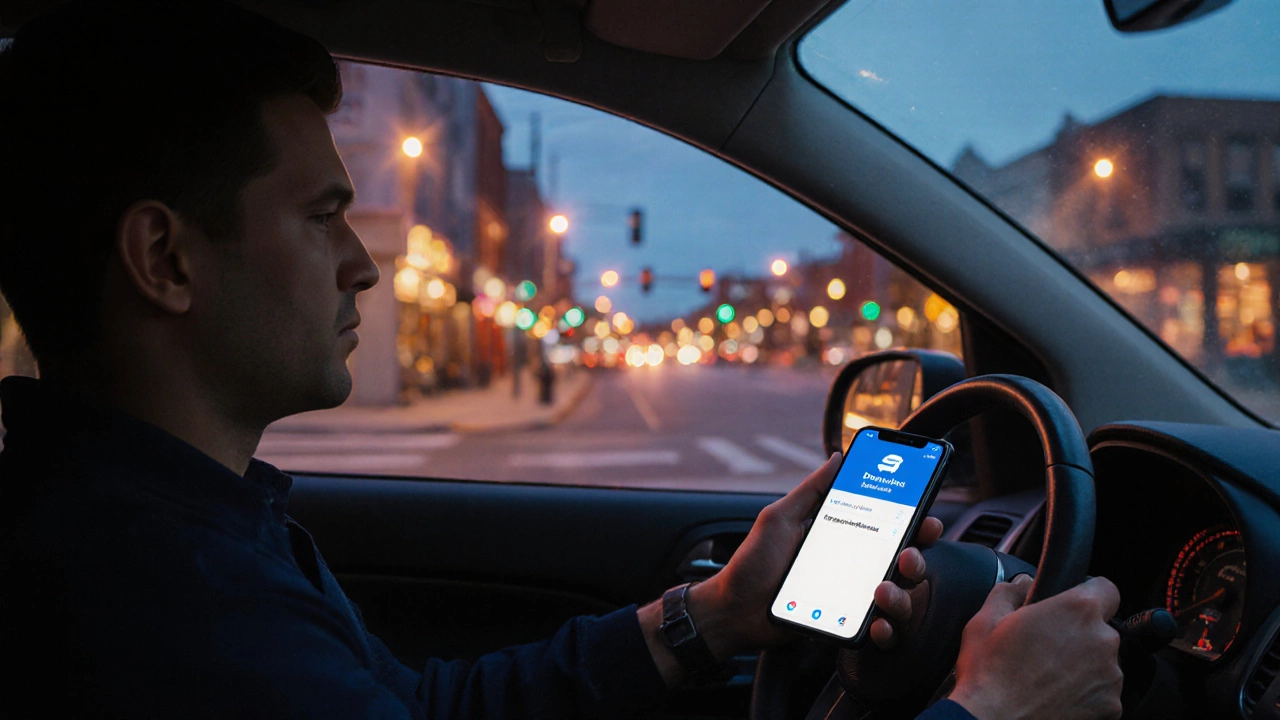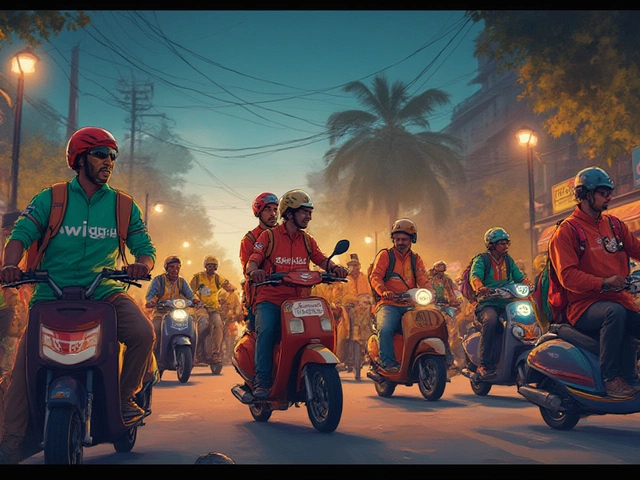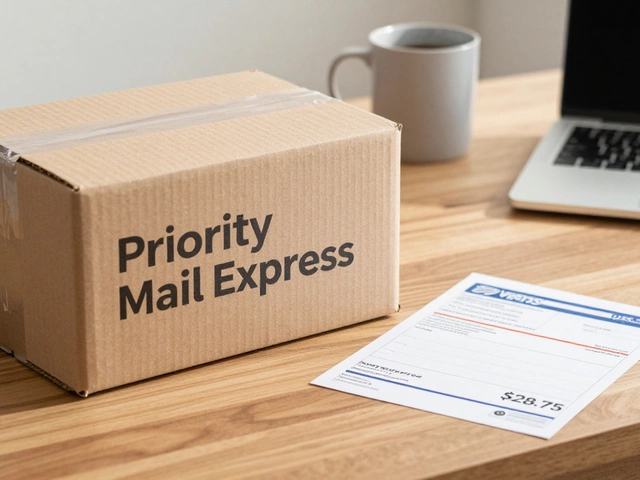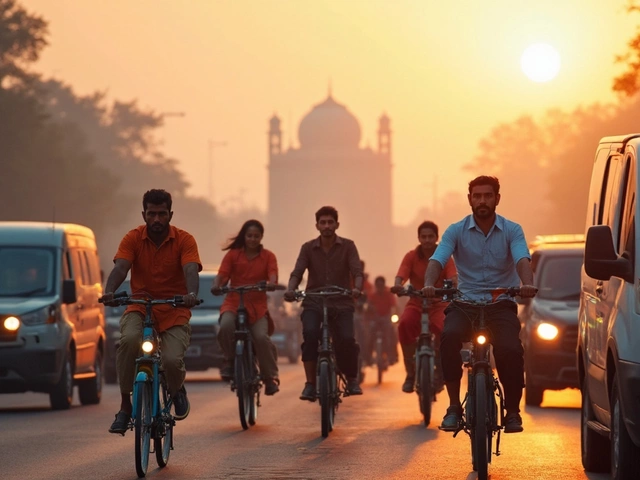DoorDash Insurance Cost Calculator
Calculate Your Coverage Costs
When you sign up as a driver, DoorDash is a food‑delivery platform that connects restaurants with independent couriers who pick up and drop off orders. The moment you hop behind the wheel, a common question pops up: Do I have to put DoorDash on my car insurance? The answer isn’t a simple yes or no - it depends on what kind of policy you already have, how your insurer defines “business use,” and whether you want extra protection against the unique risks of gig deliveries.
Why Your Regular Personal Auto Policy May Not Cover DoorDash Deliveries
Most personal auto policies are written for everyday driving - commuting, grocery runs, weekend trips. They usually contain an exclusion clause that says the policy doesn’t apply when the vehicle is used for commercial purposes, which includes earning money by delivering food. If a DoorDash accident occurs and the insurer finds the policy excluded, you could be left footing the bill for damages, medical costs, and even legal fees.
Key Factors Insurers Look At When Deciding Coverage
- Frequency of deliveries: Doing a handful of orders a month may be seen as incidental, while delivering multiple shifts daily is clearly business use.
- Vehicle type and value: High‑mileage or older cars often trigger higher premiums for commercial coverage.
- Geographic location: Some states have stricter regulations for gig‑driver insurance, and a few insurers outright refuse to cover food‑delivery work.
- Driving record: A clean record can keep rates reasonable, but any recent accidents will raise the cost of a commercial endorsement.
Personal Auto vs. Commercial Auto: Which One Fits DoorDash?
| Feature | Personal Auto Policy | Commercial Auto Policy |
|---|---|---|
| Coverage for delivery work | Usually excluded | Explicitly included |
| Liability limits | Up to $100,000 per accident (varies) | Often $300,000 or higher |
| Premium cost increase | May need a small endorsement ($50‑$150) | Typically 20‑30% higher than personal |
| Claims handling | Standard claims process | Dedicated commercial claims team |
| Eligibility for discounts | Safe‑driver, multi‑car discounts | Commercial‑fleet discounts, mileage‑based rates |
How to Add DoorDash Coverage If Your Policy Doesn’t Already Include It
- Review your current policy wording. Look for a “business use” exclusion or a clause that mentions rideshare or delivery services.
- Contact your insurer’s customer service. Ask specifically about adding a “delivery endorsement” for DoorDash.
- Ask for a written quote. Most companies will give a flat‑rate addition (often called a "rideshare endorsement") that covers food‑delivery work.
- Compare the endorsement cost with a stand‑alone commercial auto quote. In some markets, the commercial policy may be cheaper if you drive many hours.
- Update your policy documents and keep a copy in your vehicle. If you’re ever pulled over or asked for proof of insurance, you’ll need the endorsement listed.

Common Mistakes Gig Drivers Make with Insurance
Even seasoned couriers slip up. Here are the most frequent errors and how to avoid them:
- Assuming a rideshare endorsement covers food delivery. Rideshare policies are designed for passenger transport (Uber, Lyft). Food delivery often has a separate endorsement.
- Relying on the platform’s limited insurance. DoorDash provides a basic liability policy only while you have the app open and are en route to an order. It usually caps at $1 million and may not cover your own vehicle.
- Skipping a mileage audit. Some insurers calculate premiums based on actual miles driven for work. Not reporting accurate mileage can lead to denied claims.
- Neglecting to disclose the gig work. Hidden use can void your entire policy after a claim.
Real‑World Scenario: What Happens When an Accident Occurs?
Imagine you’re delivering a late‑night pizza order in Bristol (yes, DoorDash is expanding into the UK). A car runs a red light and hits your vehicle. Here’s the step‑by‑step outcome based on your coverage:
- Personal policy without endorsement: The insurer calls the incident “commercial use” and denies the claim. You pay for repairs, the other driver’s damages, and your medical bills.
- Personal policy with a delivery endorsement: The endorsement kicks in, covering third‑party liability up to the limits you purchased. Your own vehicle repairs may still be subject to a deductible.
- Commercial auto policy: Full coverage for liability, collision, and comprehensive (if you added it). The insurer handles the other driver’s claim, your medical expenses, and vehicle repair costs, often with a lower deductible.
Having the right coverage not only protects your wallet but also keeps your gig business running without interruptions.
Cost Estimates for Adding DoorDash Coverage (2025 Data)
Below is a quick snapshot of typical price ranges for US drivers. Prices vary by state, driving record, and vehicle age.
- Delivery endorsement on a personal policy: $45‑$120 per year.
- Standalone commercial auto policy (minimum $300,000 liability): $600‑$1,200 annually.
- Additional collision/comprehensive on commercial: $150‑$300 extra.
Many drivers find the endorsement cheap enough to add, especially if they only work a few shifts a week. Full commercial policies become cost‑effective when you log more than 15‑20 delivery hours per week.

How to Choose the Right Provider
Not all insurers treat gig drivers the same. Here’s a quick checklist to help you narrow down the options:
- Does the insurer specifically mention “food‑delivery” or “courier” coverage?
- Are there online tools for quoting a delivery endorsement?
- What are the minimum liability limits? Look for at least $300,000 per accident.
- Do they offer a bundled discount if you already have homeowners or renters insurance?
- Read recent reviews from other DoorDash drivers - look for claims turnaround time and satisfaction.
Popular carriers that frequently appear in driver forums include Geico, Allstate, State Farm, and newer digital insurers like Lemonade that have specific gig‑driver products.
Quick Takeaways
- If your personal auto policy has a “business use” exclusion, you need extra coverage for DoorDash deliveries.
- A cheap delivery endorsement can fill the gap for occasional drivers.
- Heavy‑duty couriers should consider a full commercial auto policy to avoid claim denials.
- Always keep proof of the endorsement in your vehicle.
- Review your policy annually - rates and regulations change.
Frequently Asked Questions
Do I need a separate commercial policy if I only deliver a few times a month?
Usually not. Most insurers offer a low‑cost delivery endorsement that plugs the gap in a personal policy. It’s a good fit for part‑time drivers.
What does DoorDash’s own insurance cover?
DoorDash provides limited liability coverage only while you have the app open and are en route to pick up or deliver an order. It typically caps at $1 million for third‑party bodily injury and property damage, but it does not cover damage to your own vehicle.
Can I add DoorDash coverage to an existing rideshare endorsement?
Most rideshare endorsements are designed for passenger transport and exclude food‑delivery work. Ask your insurer if they can extend the endorsement to include DoorDash; many will require a separate add‑on.
How does mileage affect my premium?
Insurers often price commercial policies based on total annual miles driven for business. Reporting accurate mileage can keep premiums low; under‑reporting may lead to denied claims.
Is there a tax deduction for the extra insurance cost?
Yes. The additional premium you pay for delivery or commercial coverage is generally considered a business expense and can be deducted on your Schedule C (US) or the appropriate self‑employment form in your country.
Next Steps for DoorDash Drivers
1. Pull up your current auto policy and locate any “business use” exclusion language.
2. Call your insurer and request a quote for a delivery endorsement. Get the cost in writing.
3. If the endorsement is pricey, shop for a commercial auto quote using at least three carriers.
4. Choose the option that balances coverage limits with what you earn per shift.
5. Update your policy, save the endorsement proof, and keep a copy in your glove compartment.
Having the right insurance keeps you focused on making deliveries, not worrying about what happens if something goes wrong. It’s a small step that can save thousands in the long run.





